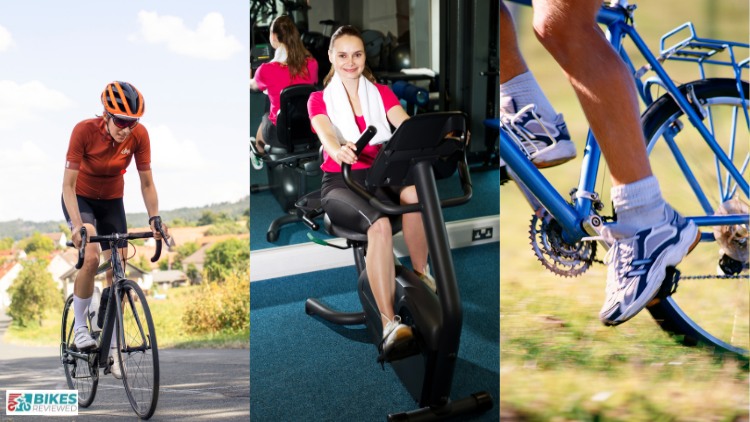Biking is not just a leisurely activity or a convenient mode of transportation; it's also a fantastic workout for your entire body. When you pedal, numerous muscle groups are engaged to keep you moving forward. In this article, we'll explore what muscles does biking work out and how you can make the most of this low-impact, high-reward exercise.
Pedaling for Lower Body Muscle Work Out

- Quads and Hamstrings: Your quadriceps, or thigh muscles, get a major workout as you push down on the pedals. This action extends your knee, propelling the bike forward. Simultaneously, your hamstrings on the back of your thighs are engaged as they flex to complete the pedal stroke. This dynamic duo is responsible for most of the power generation during cycling.
- Glutes: The gluteal muscles, your buttocks, are also essential in cycling. They work in conjunction with your quads and hamstrings to produce force, especially when you're climbing hills or need an extra burst of speed. Strong glutes help stabilize your pelvis and reduce the risk of knee and lower back pain.
- Calves and Ankles: The calf muscles and the muscles surrounding your ankles are continuously engaged during biking. They help point your toes downward at the bottom of the pedal stroke and then flex your ankle as you bring your foot back up. This repetitive motion can result in toned calves and stronger ankle stability.
Core Strength For Stability and Balance

- Abdominals: Your core muscles, including your rectus abdominis and obliques, play a crucial role in maintaining stability and balance on the bike. They help you stay upright and transmit power from your upper body to the pedals.
- Lower Back: While the lower back isn't a primary muscle group engaged in cycling, it is involved in maintaining an efficient cycling posture. A strong lower back helps you maintain the correct riding position, reducing the risk of discomfort or injury.
Involving the Upper Body in Enhancing Your Ride
- Arms: Though not the primary source of power during cycling, your arms and shoulders are not dormant. They are responsible for steering, gripping the handlebars, and supporting your upper body. Regular cycling can lead to more defined arm and shoulder muscles.
- Upper Back: Your upper back muscles, including the trapezius and deltoids, help stabilize your shoulders while cycling. Maintaining a relaxed but engaged upper body is essential for efficient riding and comfort.

So, what muscles does biking work out?
As you can see, biking engages a wide range of muscle groups, providing both strength and endurance training. Incorporating cycling into your fitness routine can help you achieve a balanced physique. Here are two insightful quotes to motivate you:
Cycling not only builds muscles but also offers a cardiovascular workout that promotes heart health and burns calories. It's a low-impact exercise, making it suitable for individuals of all fitness levels and ages. Whether you're a casual cyclist or a dedicated rider, you're sure to reap the physical and mental benefits of this fantastic sport.
By targeting various muscle groups, cycling helps you build strength and endurance while minimizing the risk of impact-related injuries. It's a versatile workout that can be tailored to your fitness goals. Whether you want to build leg strength, tone your core, or simply enjoy the great outdoors, biking has something to offer.
So, the next time you hop on your bike, remember that you're not just going for a ride – you're giving your entire body a workout. The key is to maintain proper form and gradually increase the intensity of your rides as your fitness improves. Whether you're commuting to work, exploring scenic trails, or participating in competitive races, biking is an enjoyable and effective way to stay fit and healthy.
What muscles does biking work out? Cycling is a fantastic full-body workout that engages your lower body, core, and upper body muscles. This low-impact exercise offers a myriad of health benefits and can be tailored to your fitness goals. So, grab your bike, hit the road, and enjoy the physical and mental rewards of this wonderful sport.
